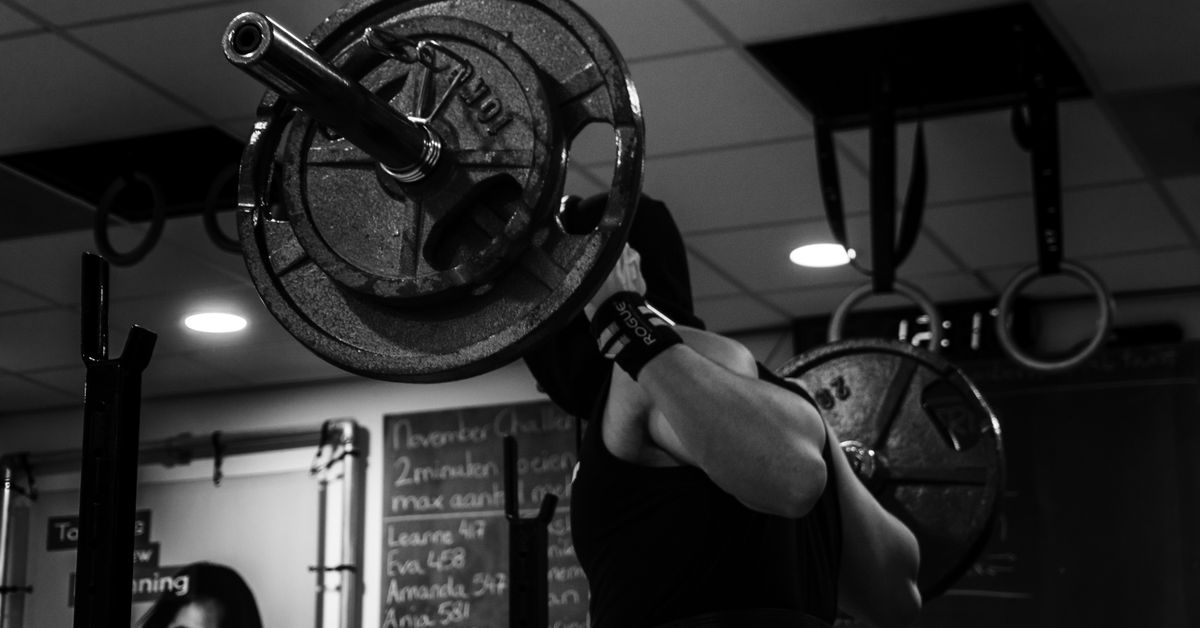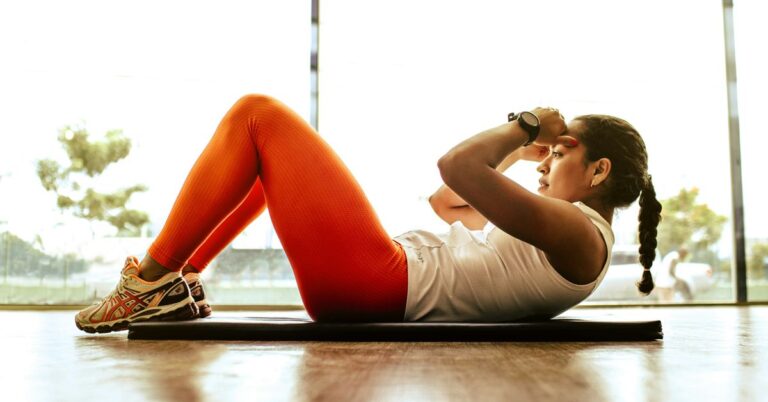Unveiling the Must-Try Features of the Best Fitness Apps You’ve Overlooked
In a world where technology is seamlessly intertwined with our everyday lives, finding the right fitness app can feel as daunting as completing a marathon. You’ve likely heard of the popular ones—MyFitnessPal, Strava, and Fitbit—but have you ever wondered what lies beneath the surface of these seemingly ubiquitous tools? There’s a treasure trove of features in lesser-known apps that could transform your fitness journey. Let’s dive in and uncover those hidden gems, shall we?
The Power of Personalization
First off, one of the standout features you might have overlooked in many fitness apps is personalization. You know how some apps ask for your age, weight, and fitness goals? That’s just the tip of the iceberg. What really makes a fitness app shine is how it tailors its recommendations based on your activity level, preferences, and even the time of day.
Take, for instance, Fitbod. This app uses an algorithm that not only understands your workout history but also adapts your strength training sessions based on the equipment you have available. I remember using it for the first time; I entered my limited home gym equipment (a couple of dumbbells, a yoga mat, and a resistance band) and was pleasantly surprised by the smart suggestions it generated. It felt like having a personal trainer right in my pocket!
Integrative Nutrition Tracking
Nutrition is a critical component of any fitness regimen, and while many apps offer basic calorie counting, some take it a step further. MyFitnessPal is notorious for its extensive food database, but have you checked out Noom? This app doesn’t just focus on calorie intake; it integrates behavioral psychology into its nutrition tracking.
With Noom, you’re not merely logging your meals; you’re embarking on a journey of self-discovery. It encourages you to reflect on your food choices and emotional eating patterns. As I navigated through its colorful interface, I felt like I was participating in a little therapy session each time I logged my meals. A little odd? Perhaps. But it’s effective! Studies suggest that understanding the “why” behind our eating habits can lead to more sustainable weight loss.
Interactive Challenges and Community Support
Let’s face it—staying motivated can be tricky. While some fitness apps offer challenges, the community aspect can often be overlooked. That’s where Zwift comes in. This app is primarily geared toward cyclists and runners, allowing you to train in a virtual world alongside other users. Picture yourself racing against a friend in the Alps while you’re actually on your stationary bike in the living room. It’s exhilarating!
I once joined a “Tour de Zwift” event; the camaraderie I felt while cycling with others from around the globe was palpable. It’s like a social media platform for fitness enthusiasts, where you can cheer each other on or even compete in real-time. This community-driven approach can turn a solitary workout into a fun, shared experience.
Mindfulness and Recovery Features
Understanding the importance of mental health in a fitness journey is crucial. Apps like Headspace and Calm have made mindfulness mainstream, but have you thought about how some fitness apps incorporate these elements? For instance, Calm’s integration with Peloton helps users unwind after an intense workout with guided meditations tailored to recovery.
Imagine finishing a vigorous cycling class and then transitioning into a 10-minute cool-down meditation led by a soothing voice. It struck me that this combination could be the secret sauce to not just physical fitness but holistic well-being. Studies suggest that incorporating mindfulness practices into your fitness routine can enhance recovery and lead to better performance overall.
Augmented Reality (AR) Experiences
Augmented reality has been making waves in various sectors, but its application in fitness is both exciting and underappreciated. Zombies, Run! is a unique app that turns your run into an immersive storytelling experience. You’re not just jogging; you’re part of a zombie apocalypse narrative, where you must collect supplies while evading the undead. Talk about motivation!
I remember the first time I used it; I found myself running faster than I ever thought possible—partly due to the fear of being chased by virtual zombies, and partly because I was genuinely invested in the story. The thrill of hearing the “zombies are coming!” sound effect behind you is a game-changer. Who knew running could be this fun? It’s an engaging way to get your miles in while keeping your mind entertained.
Fitness Gamification
Gamification is another feature that many apps are starting to embrace, but not all do it well. Apps like Fitocracy take the concept of leveling up and apply it to your fitness journey. You earn points for completing workouts and can unlock achievements as you progress. It’s almost like playing a video game with your health as the primary goal.
When I first started using Fitocracy, I felt like I was back in my teenage years, playing RPGs and trying to level up my character. The competitive edge it instilled in me was exhilarating. It turns out that the combination of fitness and gaming is not just entertaining but can significantly boost motivation. Some studies show that gamifying workouts can lead to longer adherence to fitness routines.
Wearable Tech Integration
In the era of wearables, one of the most underestimated features of fitness apps is their ability to sync seamlessly with wearable tech. Apps like Strava and Garmin Connect can transform your fitness data into actionable insights. They allow you to track your performance metrics in real-time, helping you understand your progress better.
I’ll never forget the day I synced my Garmin watch with the Strava app. It was like a light bulb turned on—I could see my heart rate, pace, and even elevation changes on a single dashboard. Having these metrics at my fingertips allowed me to fine-tune my training and push myself further than I ever thought possible. It’s like having a personal coach in your pocket, constantly analyzing your performance.
Customizable Workout Plans
Many users often overlook the feature of customizable workout plans. While it’s great to have pre-programmed routines, some apps like Jefit and Nike Training Club allow you to create your own workout based on your preferences and goals. This flexibility means you can adapt your routines as you progress or as your schedule changes.
When I first started crafting my own workouts in Jefit, I was amazed at how empowering it felt. No longer was I constrained by someone else’s idea of what a workout should be. Instead, I could focus on my personal goals—whether that was bulking up or just trying to fit in a quick session between meetings. This kind of control can be incredibly motivating.
Real-Time Feedback and Coaching
One feature that often gets overlooked is real-time feedback during workouts. Apps like Freeletics use AI-powered coaching to analyze your movements and provide immediate suggestions for improvement. This feature is particularly valuable for beginners who may not have access to in-person training.
I remember my first encounter with Freeletics; as I completed my squats, I received instant feedback on my form. It felt like having a coach right there, correcting me, and pushing me to improve. It’s this kind of personalized attention that can make all the difference in your fitness journey, especially when you’re just starting out.
Offline Functionality
Last but certainly not least is the often-overlooked feature of offline functionality. Many apps require a constant internet connection, but some like MapMyRun and Runkeeper allow you to download workouts and maps for offline use. This can be a lifesaver when you’re in an area with spotty service or if you’re out in nature, trying to escape the hustle and bustle of daily life.
I learned the importance of this feature during a hiking trip in the mountains, where my phone lost signal. Luckily, I had downloaded my workout beforehand, allowing me to navigate the trails without a hitch. It’s these little conveniences that can make a big difference in your fitness experience.
Conclusion
As we wrap up this exploration of the often-overlooked features of fitness apps, it’s clear that there’s more than meets the eye in the world of digital fitness. Whether you’re looking for personalization, community support, or innovative technology, there’s an app out there that can meet your needs and help you elevate your fitness game. So, the next time you’re scrolling through the app store, don’t just settle for the most popular names—dare to dig deeper and discover the hidden gems that could transform your fitness journey.
Remember, it’s not just about tracking your steps or counting calories. It’s about finding the tools that resonate with you and your unique fitness goals. Happy exploring!









